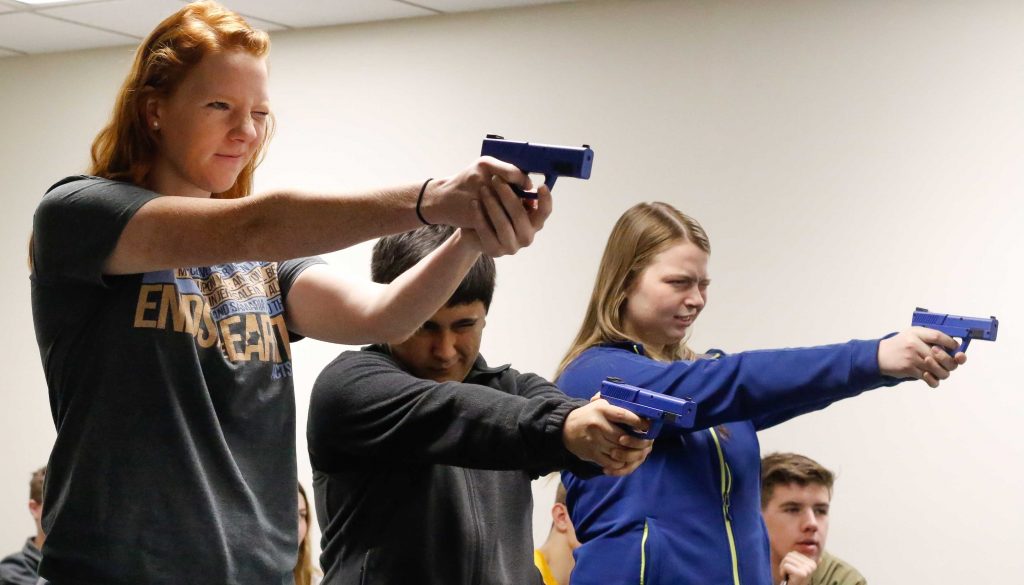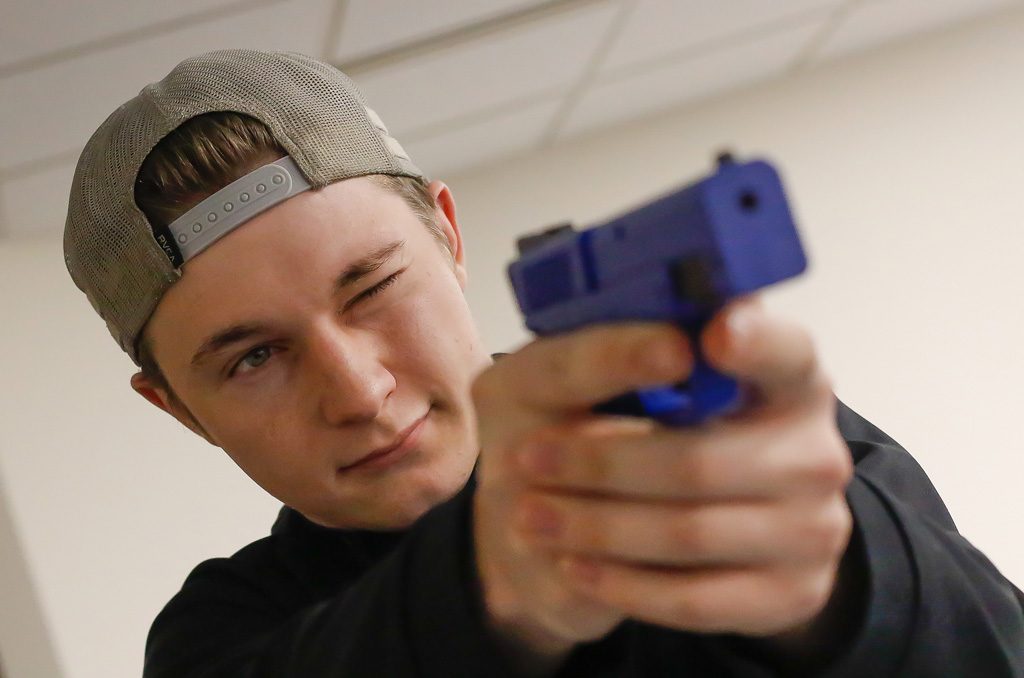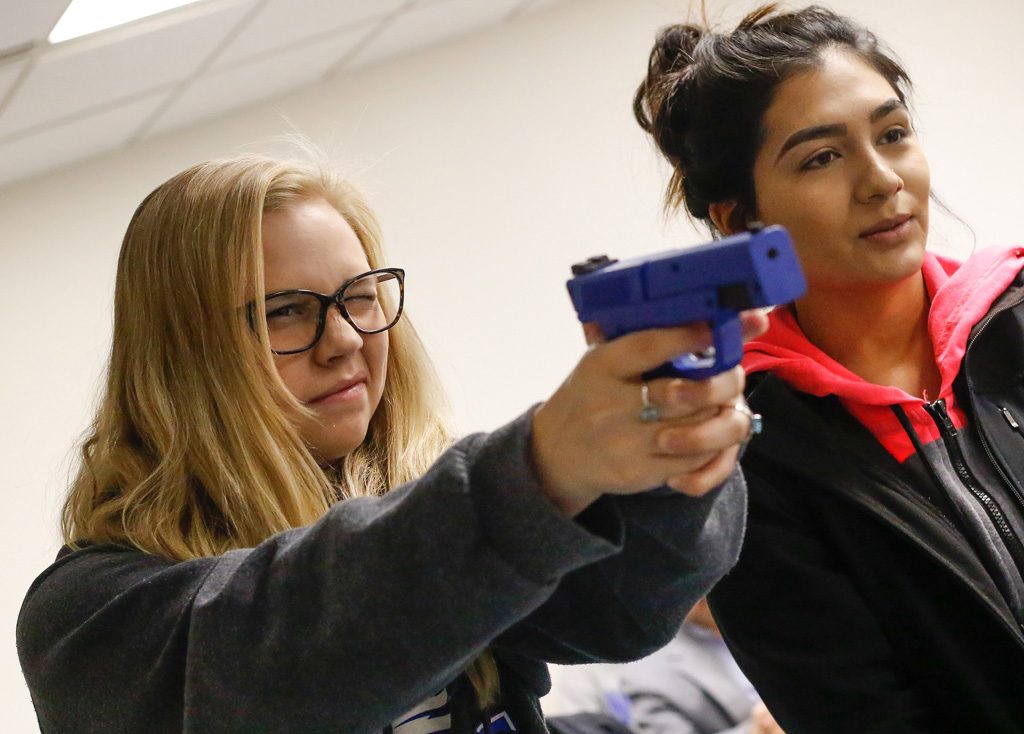
By SARA GIBONEY, UNK Communications
KEARNEY – University of Nebraska at Kearney students are learning firsthand how stressful a police officer’s job can be in a potentially lethal situation.
Inside a UNK classroom recently, red lights flashed on targets set up against a dry erase board. Students, lined up in the front of the classroom, raised laser pistols and shot at the targets.

“When the target’s light comes on, it represents the short time an officer has to make a decision as to whether his or other people’s lives are in danger and what action they should take,” said Joe Carlson, professor of criminal justice.
The light on the target disappeared after five seconds.
The target represents an armed terrorist. If the student misses the target within those five seconds, it means the “terrorist” fired at them.
The portal class on terrorism aims to teach students about terrorism across the world and how police react to acts of terrorism. Portal classes let first-year students analyze critical issues confronting individuals and society, including a global context.
Carlson said the terrorism class discusses current events related to terrorism such as the Syrian conflict, and types of terrorism ranging from animal rights activists to white supremacists to Islamic extremists.
The UNK classroom exercise – using LaserLyte Trainer pistols and targets – teaches students how quickly a police officer must react in a situation with an armed terrorist. The training pistols use laser beams showing sight lines and do not accept live ammunition.
“This teaches students that there’s no time to second-guess themselves,” Carlson said. “There’s no intent to teach students how to shoot guns. We’re teaching them how to recognize the shortness of time and what situations justify the use of deadly force.”
In the class, students learn about the Use-of-Force Continuum, an escalating series of actions an officer may take to resolve a situation. Students begin learning about situations that require no force and eventually learn about situations that require pepper spray, batons, tasers or even deadly force.
Last month, the class observed a mock hostage situation and rescue by the Kearney Police Department and Buffalo County Sheriff’s Department Emergency Services Unit. Students participated in and observed mock hostage negotiations and a mock forced entry and arrest, and viewed equipment used during emergency situations.
“We’re teaching them the principles that are dictated by the United States Supreme Court and our constitutional rights, so they clearly understand why certain things are done,” Carlson said.
-30-
